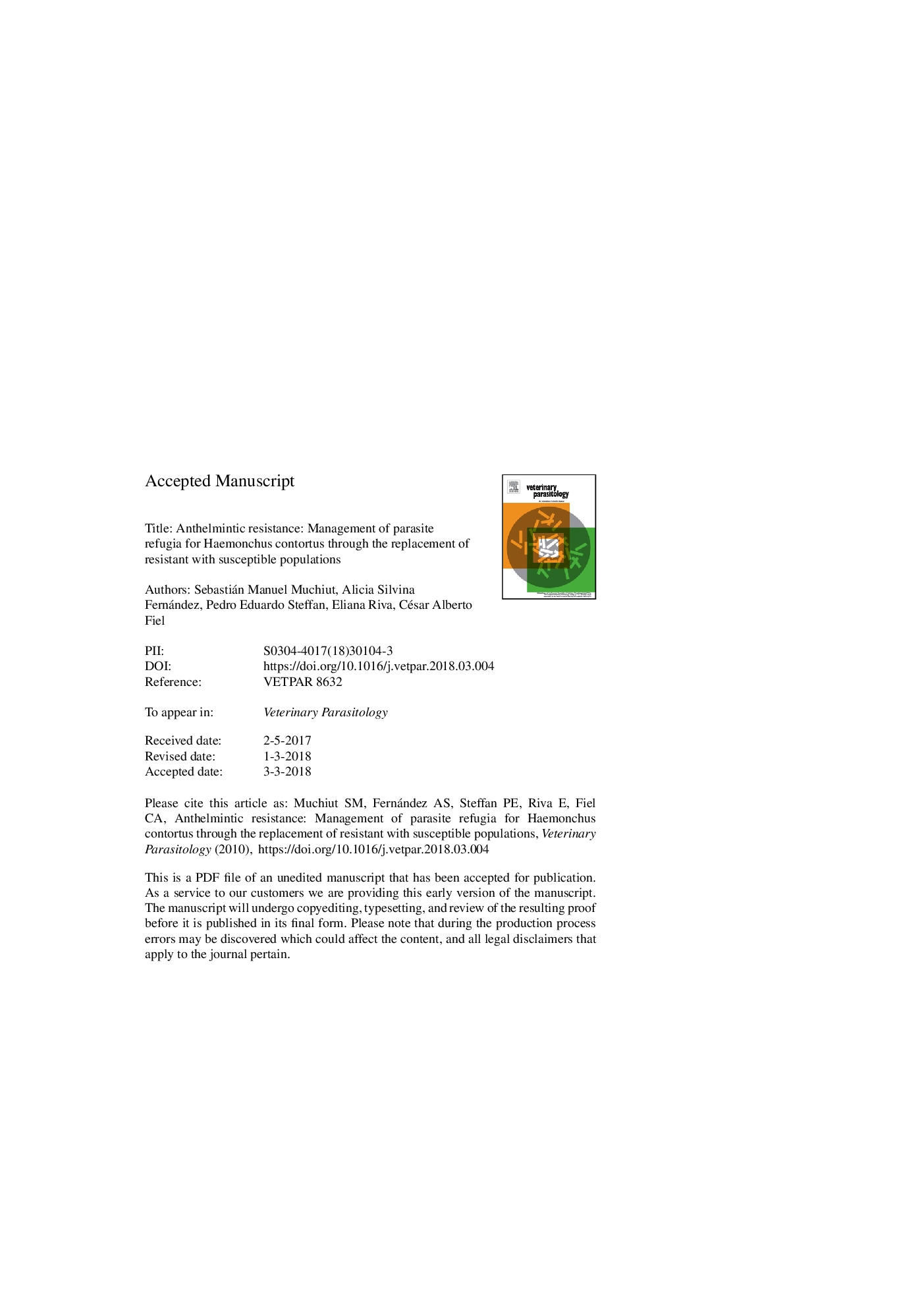| Article ID | Journal | Published Year | Pages | File Type |
|---|---|---|---|---|
| 8506006 | Veterinary Parasitology | 2018 | 25 Pages |
Abstract
Sheep production in tropical and temperate regions is hampered by the presence of Haemonchus contortus, the blood-sucking nematode that is the major cause of economic losses in small ruminant enterprises. The most limiting factor in the control of this parasitic disease is the steady progress of anthelmintic resistance worldwide. The search for control strategies that minimise the use of anthelmintics is therefore central to various efforts worldwide. One strategy is the introduction of susceptible parasites in refugia when these refugia are at low levels. This strategy could lead to a renewed possibility anthelmintics being effective. At farm level, this management practice could recover the use of anthelmintics in flocks with high levels of resistance. This review explores the possibility of replacing resistant H. contortus populations with susceptible ones through refugia management and. highlights the experiences of on-farm research attempts carried out in different geographical areas, reaching various degrees of success.
Related Topics
Life Sciences
Agricultural and Biological Sciences
Animal Science and Zoology
Authors
Sebastián Manuel Muchiut, Alicia Silvina Fernández, Pedro Eduardo Steffan, Eliana Riva, César Alberto Fiel,
